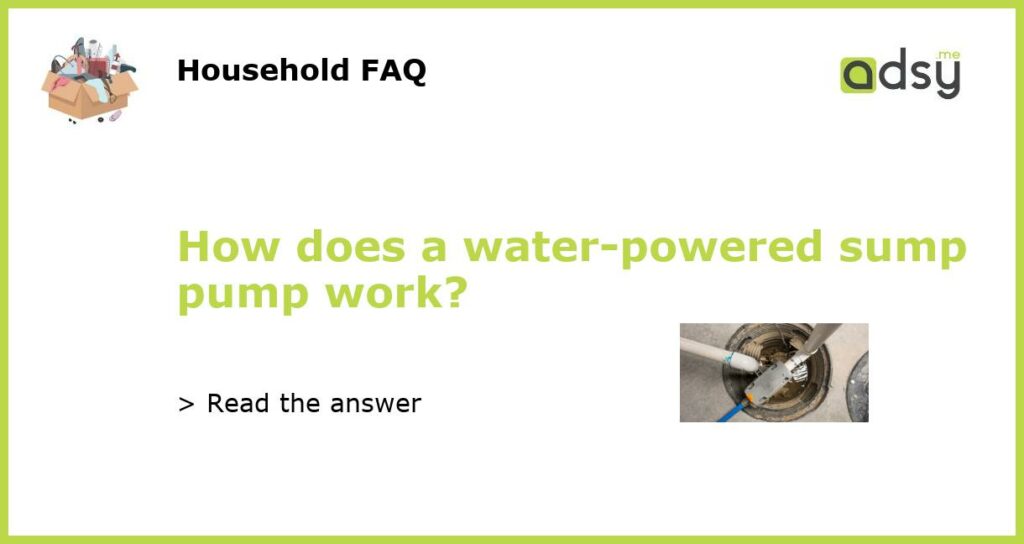How Does a Water-Powered Sump Pump Work?
A water-powered sump pump is a type of backup sump pump that relies on water pressure to function. It is a reliable and efficient solution to prevent basement flooding during power outages or when the primary sump pump fails. In this article, we will explain how a water-powered sump pump works and discuss its advantages and limitations.
Understanding the Basics
A water-powered sump pump works by using water pressure from your home’s municipal water supply or well to create a vacuum that draws water out of the sump pit. The pump is typically installed alongside the primary electric sump pump and is connected to the same discharge pipe.
The water-powered sump pump consists of a chamber with an inlet and an outlet valve, a venturi nozzle, and a water supply line. When the water level in the sump pit rises, it activates a float switch, which opens the inlet valve to allow water to enter the pump chamber. The water then flows through the venturi nozzle, creating a low-pressure area that draws water from the sump pit.
As the water passes through the venturi nozzle, it mixes with air and increases in velocity. This creates a strong suction force that pulls water out of the sump pit and pushes it into the discharge pipe, where it is safely pumped outside your home.
The Advantages
One of the main advantages of a water-powered sump pump is that it does not rely on electricity to operate. This makes it an ideal backup solution during power outages, when the primary electric sump pump may be rendered useless. As long as you have a steady supply of water, your water-powered sump pump will continue to remove water from the sump pit and protect your basement from flooding.
Another advantage of a water-powered sump pump is its simplicity and low maintenance requirements. Unlike electric sump pumps, which can be prone to mechanical failures and clogs, water-powered sump pumps have fewer moving parts and are less likely to get clogged with debris. This means you don’t have to worry about regular maintenance or replacing mechanical components.
The Limitations
While water-powered sump pumps offer several advantages, they also have some limitations to consider. The most significant limitation is their water consumption. Water-powered sump pumps use a substantial amount of water to operate, potentially increasing your water bill. However, the exact amount of water consumed will depend on the frequency and duration of the pump’s operation.
Another limitation is the flow rate of a water-powered sump pump. Compared to electric pumps, water-powered models typically have a lower flow rate, which means they may take longer to remove water from the sump pit. This could be a concern in situations where the water level rises rapidly or during heavy rainfall.
A water-powered sump pump is a reliable and efficient backup solution for preventing basement flooding. By utilizing water pressure from your home’s water supply, it can remove water from the sump pit even during power outages. While they have some limitations, such as increased water consumption and lower flow rate, the benefits, including simplicity and low maintenance requirements, make them a popular choice for homeowners looking for backup protection.

